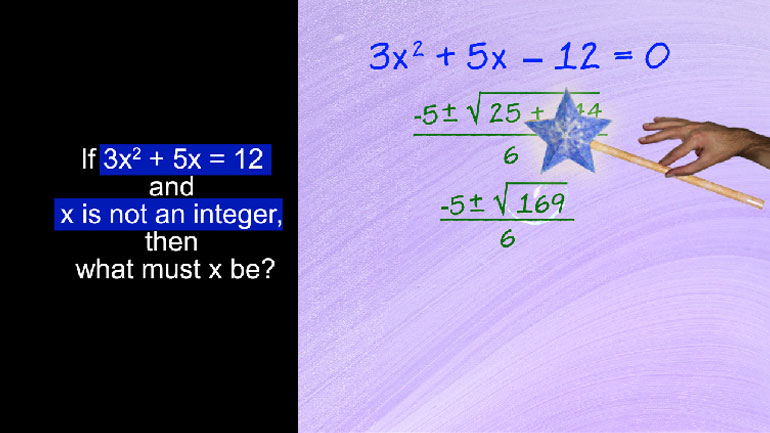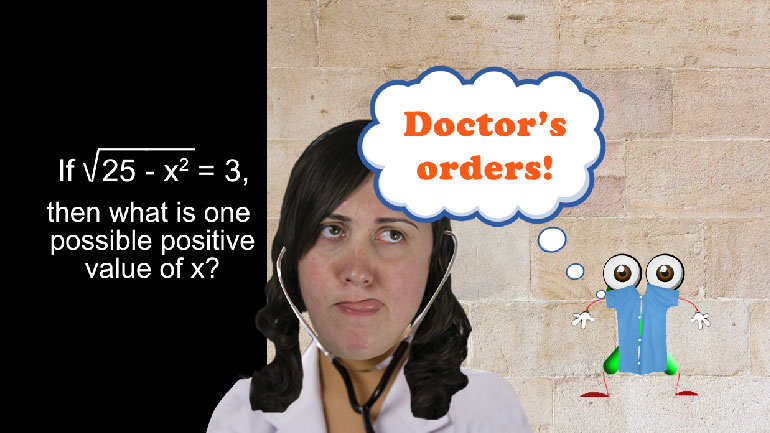ShmoopTube
Where Monty Python meets your 10th grade teacher.
Search Thousands of Shmoop Videos
SAT Math 1.3 Numbers and Operations 196 Views
Share It!
Description:
SAT Math 1.3 Numbers and Operations. x and y must be which of the following?
Transcript
- 00:02
Put this in your calculator and shmoop it.
- 00:06
If the absolute of x plus y equals the absolute
- 00:08
value of x plus the absolute value of y, then x and y must be which of the following?
- 00:14
I. Positive II. Negative
- 00:15
III. One positive and one negative Here are the potential answers...
Full Transcript
- 00:23
Alright, we have one of those multiple part questions where we have to test choices I, II, and III.
- 00:27
Whenever we see those straight vertical lines,
- 00:30
also known as the absolute value sign. We know the answer that comes out of those
- 00:33
lines will always, always be positive. So, let's test each case by plugging in numbers for x and y.
- 00:40
Case I: Both x and y are positive.
- 00:44
If x = 5 and y = 5, the absolute value of 5 + 5 = 10, and the absolute value of 5 plus
- 00:51
the absolute value of 5 is also 10. Check, this one works.
- 00:55
Case II: Both x and y are negative.
- 00:58
If x = -5 and y = -5, then the absolute value of negative 5 plus negative 5 = 10, and the
- 01:05
absolute value of negative 5 plus the absolute value of negative 5 equals 10. Check.
- 01:10
Case III: x and y are opposite signs.
- 01:14
If x = 5 and y = -5. The absolute value of 5 plus negative 5 equals zero.
- 01:22
and the absolute value of 5 plus the absolute value of negative 5 equals 10.
- 01:27
Ehh, this one's a no-go.
- 01:30
Only cases I and II make the original premise true, so (D) is the correct answer.
Up Next
SAT Math 2.1 Geometry and Measurement. What is the measure of angle z in terms of x and y?
Related Videos
In 2014, the unemployment rate of one county in California was 7%. In another county, the unemployment rate was 11%. Which of the following express...
Angela is making cookies for a bake sale. She expects each batch of her cookies to sell for $40. It costs her $10 to make one batch of cookies, and...




